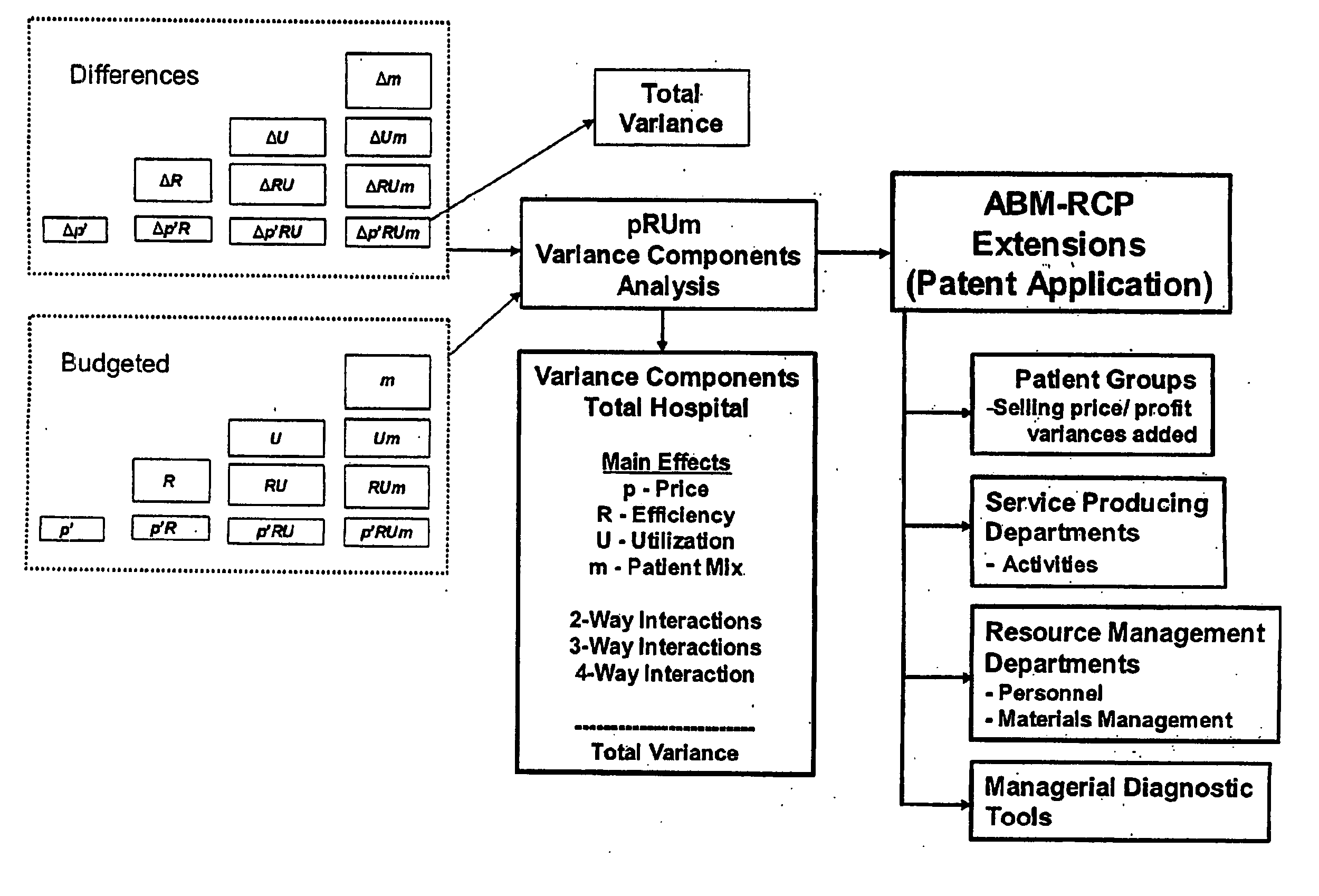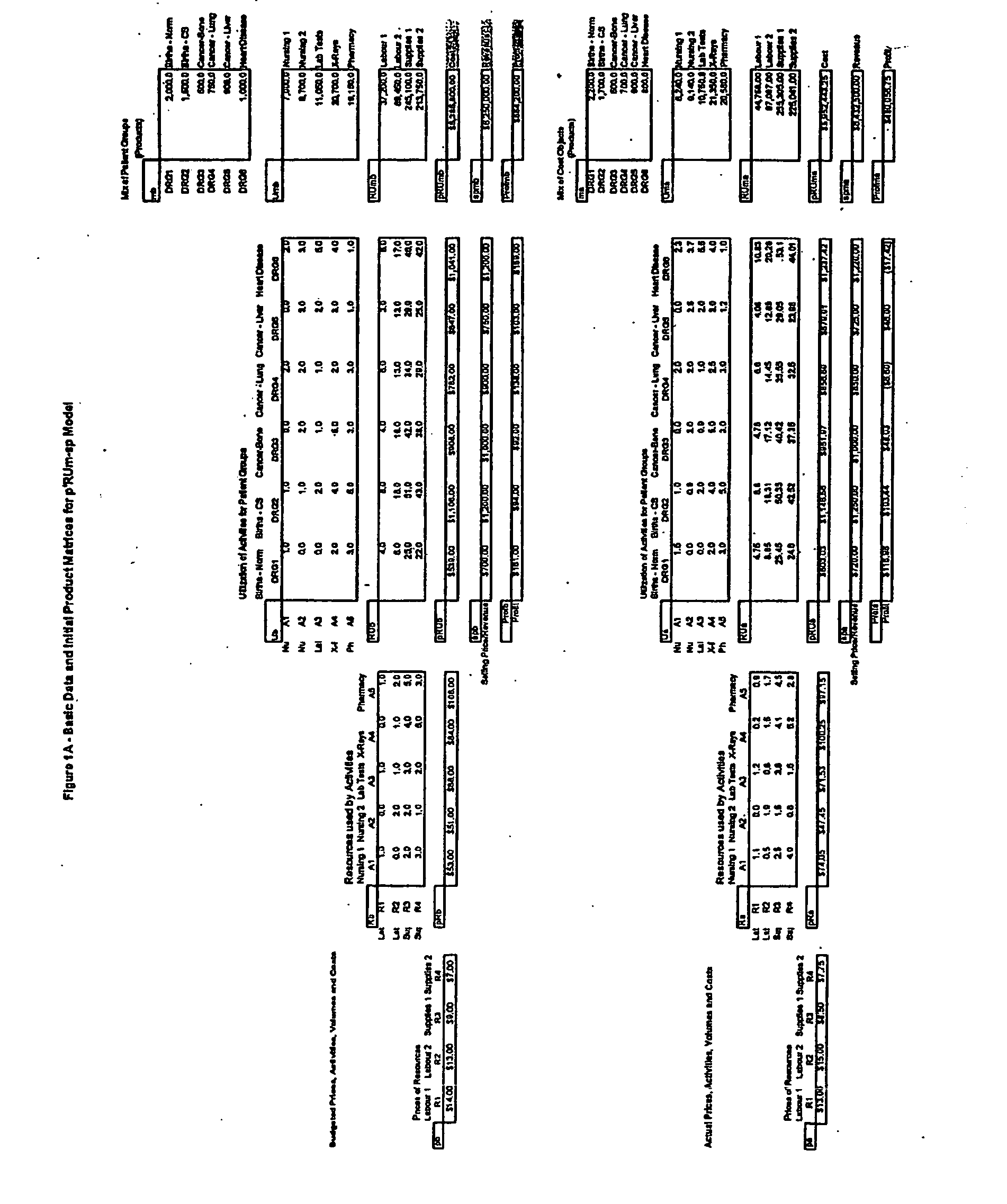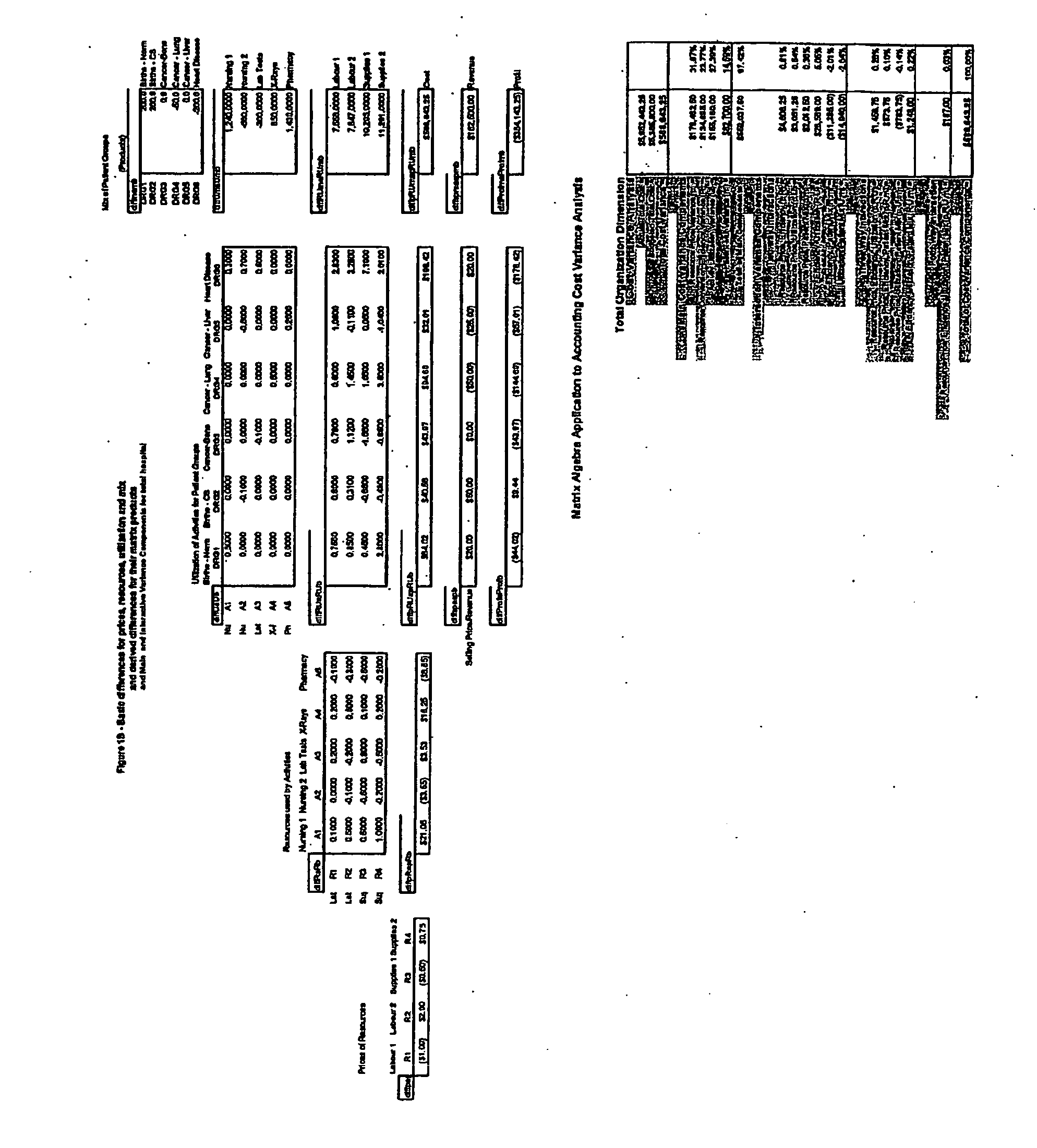Method and system of cost variance analysis
a cost variance and analysis method technology, applied in the field of accounting methods, can solve the problems of no one in the organization can easily say what the size is, and the rum model remained ignored and unused in general practice, and no one in the organization can easily say what the volume of the activity is
- Summary
- Abstract
- Description
- Claims
- Application Information
AI Technical Summary
Benefits of technology
Problems solved by technology
Method used
Image
Examples
example 1
Attributing Cost Variance to a Product or Product-Group within a Product Mix
[0098] In one embodiment, the method of the present invention is used to perform cost variance analysis at the product or product group dimension as follows. Much more detailed information than given in the original p′RUm model is possible, using the present invention. The first extension of the model requires turning the product mix vector into a diagonal matrix, where each product has its own column. (The vector m becomes diag(m), where values not on the diagonal are zeros. A variant of this puts all products that belong in a product-group into a single column. The resulting matrix is not a pure diagonal matrix, but the same formulas can be used, replacing diag(m) by group(m).)
[0099]FIG. 10 shows elements of the original pRUm method and improvements according to the present invention. The Total Variance is the difference between Actual Total Costs and Budgeted Total Costs. This number would be the bottom...
example 2
Cost Variance Analysis at the Activity and Activity-Producing Department Dimension
[0129] The present invention can be extended in a different direction, namely to allow the diagnosis of the efficiency of operation of the activity-producing departments by focusing on the resources used and activities produced by individual departments. A common complaint of departmental managers is that they should not be held accountable for factors beyond their control, namely the variations in the volume of activities they are called upon to produce because of decisions of product managers, or variations in the prices of the input resources.
[0130]FIGS. 3A-3D present illustrations of a possible implementation of the method presented in Example 2. FIG. 3A illustrates the diagonal matrices of the cost variance analysis for the product dimension according to the invention (segments a and c), and intermediate matrix products (segments b and d). FIG. 3B illustrates further intermediate diagonalized ma...
example 3
Cost Variance Analysis at the Resource Acquisition Dimension
[0147] A variance analysis which shows the impact of efficiency, prices, utilization profiles and product mix on the operation of resource-acquisition departments requires combining the effects of activity-producing department manager and product manager decisions about R, U and m to obtain the volume of resources required, RUm. This is a column vector of resources showing the volumes of resources required. The budgeted and actual values are given by the column vectors RUmb and RUma.
[0148] The third extension of the original p′RUm model is to diagonalize these vectors to obtain the matrices diag(RUmb) and diag(RUma). Each column is specific to a particular resource and gives the volume of resources required for all activities for the production of all products. Premultiplying those matrices by p′ gives the “Dollars for Resources” vectors p′·diag(RUmb) and p′·diag(RUma). These are vectors which indicate the dollars require...
PUM
 Login to View More
Login to View More Abstract
Description
Claims
Application Information
 Login to View More
Login to View More - R&D
- Intellectual Property
- Life Sciences
- Materials
- Tech Scout
- Unparalleled Data Quality
- Higher Quality Content
- 60% Fewer Hallucinations
Browse by: Latest US Patents, China's latest patents, Technical Efficacy Thesaurus, Application Domain, Technology Topic, Popular Technical Reports.
© 2025 PatSnap. All rights reserved.Legal|Privacy policy|Modern Slavery Act Transparency Statement|Sitemap|About US| Contact US: help@patsnap.com



